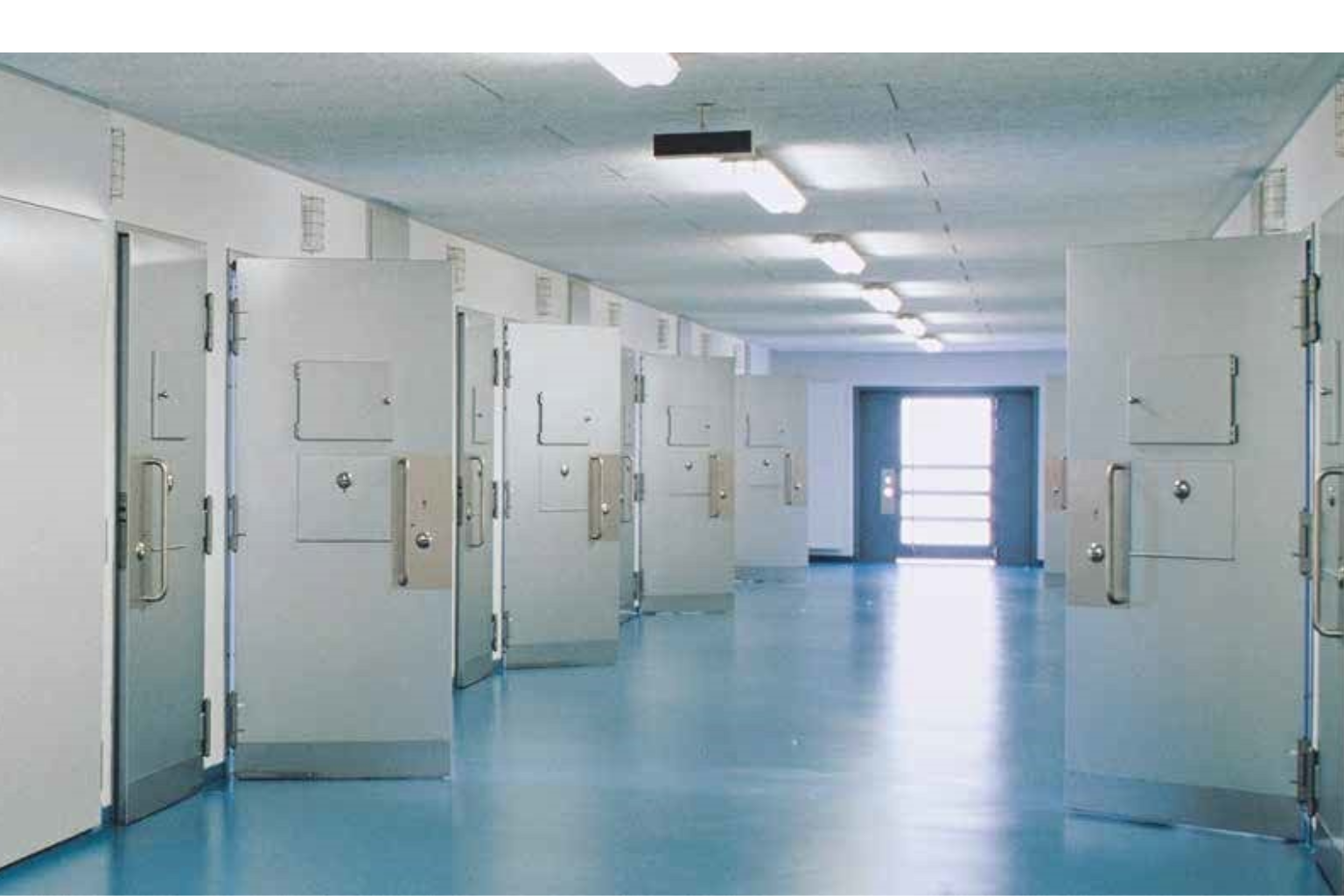Detention center doors are more than barriers; they’re silent guardians keeping staff safe and inmates secure. Yet, beyond simple strength, there’s a hidden set of durability factors often missed by those who select these critical security fixtures.
Internal Reinforcement for Maximum Security Strength
Detention center doors may appear robust at first glance, but the real strength lies beneath the surface. Internal reinforcements such as steel ribs or cross-bracing significantly enhance door security by preventing warping and resisting violent impacts. Without these hidden supports, even thick doors can buckle under repeated attacks, creating safety issues and costly repairs. Security detention equipment contractors emphasize that proper reinforcement can mean the difference between doors that last decades versus those needing constant replacement.
Choosing modular jails with doors that feature built-in internal reinforcement is a smart strategy. This reinforcement makes doors virtually impenetrable by distributing force across their structure. Many detention equipment contractors notice facilities often neglect internal structure for cosmetic appearance. Ignoring internal reinforcement can result in doors that fail unexpectedly, placing both staff and inmates at risk. Proper internal strengthening should always be a primary factor during the selection process.
Welded Seams Versus Mechanical Joints for Stability
Detention center doors endure relentless wear, making stable construction essential. Welded seams provide exceptional stability compared to mechanical joints because they fuse door parts into a solid, unified structure. Mechanical joints, assembled with bolts or screws, gradually loosen due to vibration and repeated impacts, weakening the door’s overall integrity. A welded door seam creates continuous metal connections, providing superior long-term durability.
Facilities selecting modular jails often underestimate how critical welded seams are for maintaining stability under constant pressure. Doors secured with mechanical joints might initially seem strong, but they can quickly become compromised, leaving detention centers vulnerable. Security detention equipment contractors strongly recommend doors featuring fully welded seams, as this construction technique greatly reduces maintenance needs and dramatically extends door lifespan.
Hinge Durability Under Continuous Heavy Use
Door hinges might seem like minor details, but their strength determines the functionality of detention center doors under heavy daily use. Heavy-duty, tamper-proof hinges prevent doors from sagging, sticking, or failing prematurely. Standard hinges rapidly deteriorate in high-use environments, especially in modular jails, causing doors to malfunction, posing significant security risks.
Proper hinge selection involves examining hinge materials, pin strength, and attachment methods. Stronger hinges endure constant opening and closing without weakening, while inferior products quickly wear out. Experienced detention equipment contractors know that investing in heavy-duty hinges upfront reduces future repair costs and significantly improves overall facility security.
Door Gauge Selection to Resist Intentional Damage
The thickness or gauge of metal used in detention center doors greatly affects their ability to withstand intentional damage. Lower gauge numbers indicate thicker, stronger steel capable of enduring substantial abuse. Facilities that overlook gauge selection frequently discover their doors dented, warped, or breached, necessitating expensive replacements. Security detention equipment contractors advise choosing thicker gauges for high-risk areas to prevent costly repairs.
While heavier gauge doors are initially more expensive, they pay off by dramatically reducing ongoing maintenance. Thin-gauge doors may meet budget targets upfront, but their vulnerability soon outweighs savings. Modular jails benefit from selecting robust, thicker-gauge doors, enhancing durability, improving security, and ultimately saving significant long-term costs.
Corrosion Resistance in High-Humidity Detention Environments
Detention centers often overlook corrosion resistance, particularly in humid areas where moisture rapidly deteriorates metal surfaces. Doors without adequate corrosion resistance quickly develop rust, weakening their structure and security integrity. Choosing doors fabricated from corrosion-resistant materials or treated metals is essential, especially in regions prone to humidity or near coastal environments.
Rust not only damages doors cosmetically—it seriously compromises structural integrity, creating vulnerabilities easily exploited. Detention equipment contractors stress that corrosion-resistant doors reduce long-term maintenance costs significantly. Investing initially in doors designed specifically for humid conditions helps ensure consistent security and minimizes expensive replacements.
Surface Coatings That Withstand Repeated Sanitization
Sanitization protocols in detention centers are strict and frequent, requiring door surfaces to withstand strong disinfectants without degrading. Poorly coated doors quickly deteriorate under constant cleaning, developing weak spots that allow bacteria growth or surface damage. High-quality protective coatings specifically designed to resist chemical exposure and frequent sanitization are vital.
Security detention equipment contractors advise selecting surface coatings proven to endure repeated sanitization without cracking or peeling. Properly coated doors maintain their integrity, appearance, and hygiene standards, dramatically reducing maintenance and replacement frequency. Facilities utilizing modular jails especially benefit from durable coatings, as these often involve standardized cleaning protocols applied multiple times daily.
Secure Locking Mechanisms Built for Extended Wear
Locks are another often-overlooked element critical for detention center security. Standard locking mechanisms can quickly degrade due to constant use, tampering attempts, and environmental exposure. Choosing high-grade, tamper-resistant locks specifically engineered for detention environments significantly increases security and reduces costly replacements. Durable locks withstand thousands of cycles without failure, maintaining consistent, reliable security.
Security detention equipment contractors regularly emphasize the necessity of robust, wear-resistant locks for detention doors. Cheap locks often fail prematurely, creating vulnerabilities that inmates can exploit. High-quality locking mechanisms, built explicitly for detention centers, incorporate reinforced parts, advanced tamper-resistant designs, and materials resistant to wear. Proper selection here dramatically increases facility security and significantly lowers maintenance and replacement costs over time.





